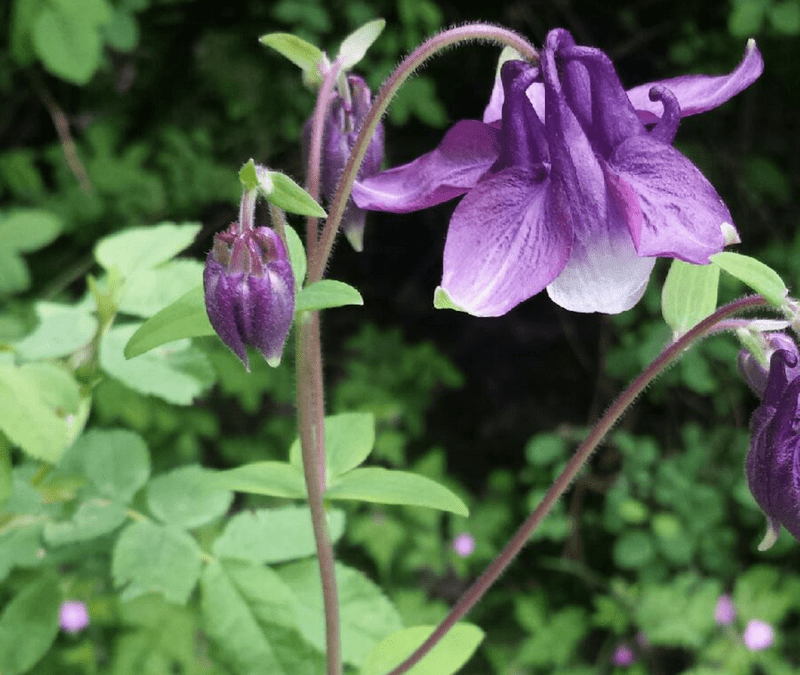With curling petals and dramatic coloration, the columbine flower is one of the most stunning native wildflowers in Washington state. These perennial
Columbines are usually pollinated by hummingbirds, whose long beaks fit perfectly into the trumpet of the flower. This relationship – between pollinator and flower – is an important example of co-evolution. Because the flower and pollinator depend on each other to survive, changes to the physiology of one means mirrored changes in the other.
That is – as the trumpet of the Columbine gets longer and longer, the beaks of the hummingbirds who pollinate it lengthen to match. This is because hummingbirds with longer beaks can better access the nectar hidden in the flower. Longer beaked hummingbirds are able to collect more food, meaning that they will be more successful and produce more eggs. This leads to longer hummingbird beaks over time!
These relationships are important because the reproduction of the flower depends on the right fitting beak. Relationships like these help scientists learn about evolutionary processes. Studying a humble wildflower has huge ramifications when you look at it the context of the whole ecosystem!
Want to learn more about this topic?



Recent Comments